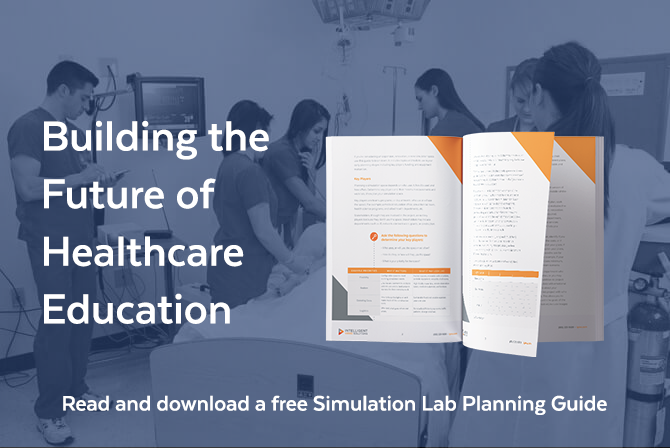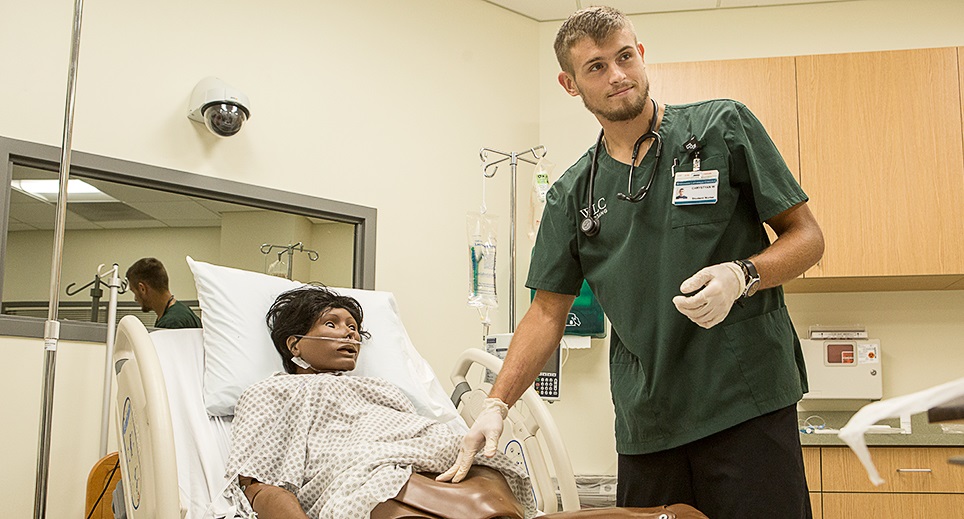What is 'simulation' to you?
There are many possible answers to this question, but to keep it simple, simulation-based-learning can take on many forms. It can be whatever your health or education department needs to improve outcomes for both students and patients.
As someone who’s worked in simulation for more than 6 years, I’ve learned simulation is anything that increases the realism of education or training. It’s used in hospitals, police departments, and even construction. It may include one person, a team, or even a whole organization.
Let’s dive into healthcare simulation in more detail to understand why it matters to help you save money and reduce mistakes.
The Benefits of Simulation in Healthcare
I currently work in healthcare where I see the benefits of simulation in almost every aspect of our work. From patient care, to building a new clinic, simulation improves the work we do and in turn, saves our organization money in the long run.
Simulation Improves Strategic Planning
Simulation is a valuable tool to strategically plan new spaces in the construction and design phase.
Using simulation techniques, a comprehensive analysis of different scenarios can be conducted, allowing for a thorough examination of potential outcomes.
Using simulation-based scenarios, the decision-making process becomes more informed and objective, ensuring that all aspects of the building plan are considered.
Where do you want the entrance?
How many bathrooms will you need?
What will the flow of traffic be?
Simulation allows for the evaluation of different design options and their impact on various factors such as cost, efficiency, functionality, and outcomes. Once the blueprint is complete and the building begins, furniture, equipment, and supplies must be purchased.
Where do you put that chair so it is not in the way of the patient in the wheelchair?
Where do you put the blood pressure cuff so you do not need to lean over the patient to reach it?
Use simulation to evaluate your new space in real-life scenarios to properly place furniture, equipment, and supplies. Use staff and a standardized patient to observe and confirm the flow, placement, and logistics of your plan.
At the start of the process simulation is used virtually when trying to determine the blueprint of the building. Where do you want the entrance? How many bathrooms will you need? What will the flow of traffic be? And it doesn’t stop there. Once the blueprint is done and building begins, furniture, equipment and supplies must be purchased. Where do you put that chair so it is not in the way of the patient in the wheelchair? Where do you put the blood pressure cuff, so you do not need to lean over the patient to reach it?
This is when simulation becomes important. Use simulation virtually to visually see how the workflow will function on the blueprint. Use simulation to bring in a standardized patient and staff to walk through the space in a real-life scenario to properly place furniture, equipment, and supplies.

Considering a new Simulation Space?
Watch this helpful video to see how simulation works in a healthcare environment.
Simulation Improves Patient Care
By leveraging clinical simulation, healthcare providers can make well-informed decisions, leading to the delivery of high-quality and patient-centered care.Here are just a few examples of how simulation improves patient care:
- Enhanced learning: Through healthcare simulation, healthcare professionals can enhance their competence, knowledge, and skill in a controlled and immersive environment.
- Improved communication: Simulation allows healthcare teams to practice effective communication and teamwork, leading to improved coordination and collaboration in actual patient care settings.
- Continuous improvement: Regular simulation sessions enable healthcare professionals to identify gaps in their knowledge or skills, leading to targeted training and ongoing professional development, resulting in improved patient outcomes over time. Skills such as ultrasound, foley placement, airway placement, central line training, correct needle placement, and so much more.
Did you know? Audio and video capture equipment is growing in prevalence in simulation labs to improve quality and productivity. The use of recording equipment in the simulation environment facilitates improved learning outcomes and directly relates to healthcare professionals’ confidence in patient encounters and improved patient outcomes.
Review this case study from Mount Royal University on how they successfully used a healthcare simulation lab to improve student learning and patient outcomes.
Simulation Reduces Risk and Increases Confidence
If simulation is done correctly, it will save your organization money. Simulation can help reduce mistakes, enhance provider confidence, and improve patient success.
By simulating potential scenarios and identifying areas of improvement, healthcare simulation helps mitigate errors and enhance patient safety by promoting adherence to best practices.
Simulation allows healthcare providers to gain valuable experience in making critical decisions during high-stress situations, leading to more confident and informed decision-making.
So why aren’t we all using simulation more?
It often comes down to the understanding and knowledge of just how easy it is to add simulation to a new or existing space.
If you’re considering an expansion, renovation, or new simulation space, our latest Healthcare Simulation Planning Guide can help you get started. It includes topics and tools to use in the early planning stages, including key players, funding, and equipment evaluation.
Intelligent Video Solutions can help you understand the best A/V capture solutions for your new healthcare simulation lab and set you up for success!
Contact our team to talk about your unique needs, schedule a free demonstration, or check out our additional resources:
VALT for Simulation
VALT Case Study: Mount Royal University
5 Tips for Obtaining a Grant for Healthcare Programs
If you’re considering simulation to save your organization from costly mistakes, check out this guide to a key component of simulation-based training:









